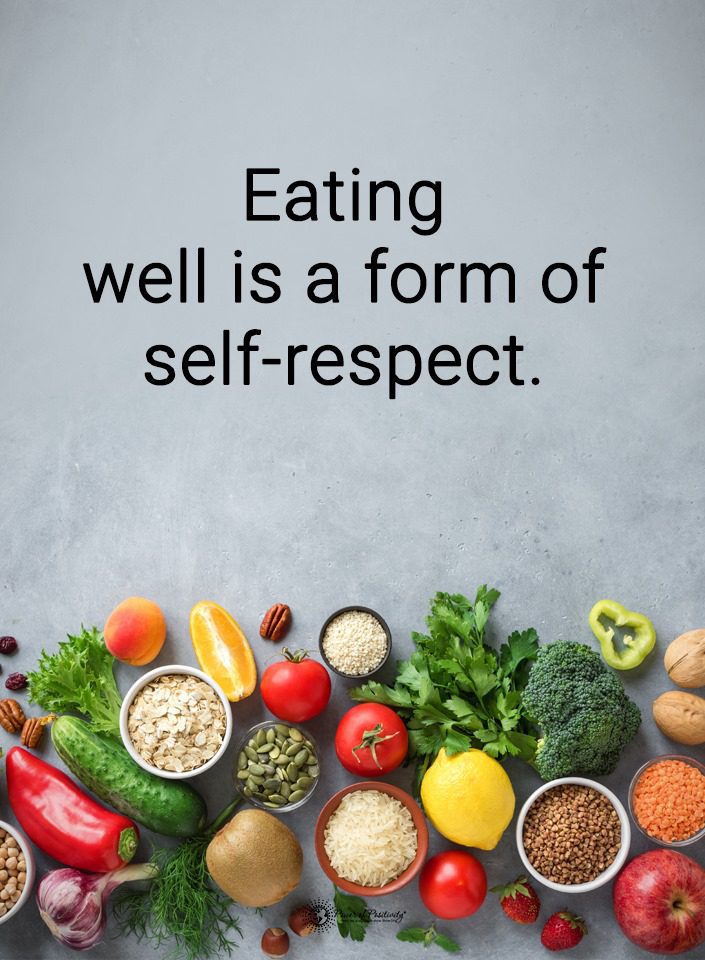When you’re ready to try a healthy diet, you will come across so many options that you might not know where to begin. Many people narrow it down to the keto vs. paleo options, two popular weight loss methods. If you’re in the predicament of choosing between the two, knowing the differences can help.
Keto and paleo diets share some similarities, but many differences can affect your body. The differences between keto vs. paleo include the allowed foods, their effects on the body, and health aspects. Both options are popular because they boost health, eliminate processed foods, and encourage weight loss.
The keto and paleo diets are low-carb plans, but they have different rules to follow. There are a few factors to consider when choosing keto vs. paleo, so knowing the differences is essential. They both require lifestyle changes, preferences, and goals.
Choosing between keto and paleo is highly restrictive and will drastically change your dietary habits. You will likely have to eliminate or drastically reduce some of your favorite meals and snacks. Knowing the difference will help you decide which diet is best for you if you’re up to the challenge.
What Is the Keto Diet?
The keto diet aims to induce a ketosis state, where your body uses fat instead of carbohydrates to create energy. You will change your dietary macronutrients during the keto diet to induce ketosis. The dietary change involves a high-fat, moderate-protein, and low-carbohydrate diet.
When your body enters a state of ketosis, it initiates the metabolic breakdown of body fat. Even the slightest macronutrient shift can take your body back out of ketosis. If you strictly follow the guidelines, though, it can help you lose weight.
In a typical diet, the body uses carbohydrates for fuel. If you follow the keto diet, you won’t consume many carbs, triggering the body to use fat and excess protein as fuel. The liver turns stored fat into ketones, using them as energy for the body.
Keto excludes certain foods and encourages others. Grains and legumes are excluded, so you must get your carbs from keto-friendly vegetables. The keto diet doesn’t only help with weight loss, as it also helps improve blood sugar control.
What Is the Paleo Diet?
The paleo diet is based on consuming foods that early humans ate in the Paleolithic era. It restricts processed foods and modern production techniques, supporting natural biological function and improving digestion. The paleo diet requires cutting out modern-day foods such as dairy and grains and encouraging healthy fats and animal protein.
Some people view the paleo diet as an impactful environmental choice rather than a way to lose weight. They might also view it as a beneficial lifestyle that results in total body wellness.
Along with losing weight, the paleo diet reduces inflammation, improves workouts, increases energy, and stabilizes blood sugar. Plus, it reduces the risk of chronic diseases.
Supporters of the paleo diet say that the human body cannot naturally handle the processing and digestion of grains. The foods that are encouraged on this diet include ones that are rich in protein and fiber. There is a strong emphasis on meat, fruits, and vegetables.
Key Differences Between Keto and Paleo Diets
While there are many similarities between keto and paleo diets, the differences are essential to know. Knowing the differences can help you decide which diet plan works best with your lifestyle.
Keto Involves Macronutrients While Paleo Involves Ideology
Keto doesn’t have a direct lifestyle component, and it doesn’t involve ideological focuses. Instead, it focuses on macronutrients and sticking to a strict dietary regime.
Paleo, on the other hand, focuses on lifestyle choices and ideology. On a paleo diet, you must incorporate intense but short exercises into your routine.
Paleo Allows for More Whole-Food Carbohydrates
While paleo restricts some sources of carbs, you can still get carbs from whole-food sources. Unlike the keto diet, you can choose from unrefined sweeteners, vegetables, and fruits containing carbs. If you are on the keto diet, you can’t eat any carbs, including legumes, sweeteners, grains, most fruits, and some starchy vegetables.
Keto Allows Some Dairy and Soy
You can consume dairy products such as butter, heavy cream, and unsweetened yogurt on a keto diet. Plus, you can eat some sources of soy, such as soybeans, tofu, and tempeh. On a paleo diet, however, soy and dairy are discouraged.
Paleo Excludes Processed Meats
Processed meats, including bacon, ham, and salami, are excluded from a paleo diet because they result from modern food processing techniques. The keto diet allows processed meats as long as they don’t contain carbohydrates or sugar.
Keto Restricts Starchy Vegetables
Since keto restricts all carbohydrates, starchy vegetables aren’t an option. Eating them could interrupt your ketosis state, undoing your hard work. The paleo diet allows you to eat any vegetable, even starchy, in moderation.
Paleo Allows for Eating Fruit
While fruits contain many nutrients, vitamins, minerals, fiber, and antioxidants, most aren’t allowed on the keto diet. The paleo diet allows for eating all fruit, despite its sugar or carbohydrate levels.
Even on the paleo diet, you should still focus on fruit with low sugar whenever possible. Don’t eliminate your favorite high-sugar fruits, though, as any fruit is okay in moderation.
Keto Allows Some Dairy Products
On the keto diet, dairy products high in fat and protein are acceptable. However, the keto diet does not include dairy products containing sugar, including ice cream, milk, and sugar-sweetened creamer. The paleo diet excludes all dairy products because the Paleolithic humans didn’t consume them.
Key Similarities Between Keto and Paleo Diets
Keto and paleo have similarities, despite the many differences. These similarities include:
An Emphasis on Whole Food
Both keto and paleo have an emphasis on whole foods as nutrient sources. Whole foods are not processed and come in the most natural form possible. Most allowed foods include vegetables, nuts, fish, and meat.
Eliminate Legumes and Grains
Keto and paleo diets force you to eliminate grains and legumes, although each diet has different reasoning. Paleo excludes them because they weren’t part of the Paleolithic diet, while keto excludes them because of the sugar and carbohydrate content.
Both Eliminate Added Sugar
Paleo and keto diets require that you eliminate added sugars. On a paleo diet, you can consume natural sugars, but keto restricts all sugars because of the carbohydrate levels.
Emphasize Healthy Fats
Both keto and paleo diets allow unrefined and healthy fats from fish, nuts, seeds, and avocado oils. The mono and polyunsaturated fats allow for a healthier body, improve metabolic functioning, and benefit heart health.
Both are Effective for Weight Loss
The paleo and keto diets both promote weight loss. Research shows that people on these diets lost a significant percentage of their body weight. Keto is a short-term option, as the weight can quickly return when you stop the diet.
They Both Exclude Some Healthy Foods
Both diets advise against consuming some foods that are considered healthy. According to the Dietary Guidelines For Americans, healthy foods that are restricted include rice, wheat, quinoa, pasta, bread, and oats. These diets also exclude healthy beans, peanuts, peas, soy, and lentils.
Keto Vs. Paleo Food List
The keto vs. paleo food list can help determine what you can eat on each diet. Some of the restrictions might help you make up your mind.
| Food or food group | PALEO | KETO |
| Animal proteins including beef, pork, chicken, turkey, and fatty fish | Allowed | Allowed |
| Bacon and other processed meat | Not allowed | Allowed |
| Eggs | Allowed | Allowed |
| Dairy foods such as milk, cream, butter, and cheese | Not allowed | Allowed |
| Nuts and seeds | Allowed | Allowed |
| Oils including olive oil, coconut oil, and avocado oil | Allowed | Allowed |
| Low-carb vegetables including avocado, green leafy vegetables, tomatoes, onions, peppers, and fresh herbs | Allowed | Allowed |
| Grains or starches | Not allowed | Not allowed |
| Beans and legumes | Not allowed | Not allowed |
| Fruit | Allowed | Not allowed, unless it is small portions of low-sugar berries or citrus fruits |
| High carb vegetables such as potatoes and carrots | Allowed | Not allowed |
| Sugars and sweet foods like soda, juice, ice cream, and candy | Not allowed | Not allowed |
| Natural sweeteners, including honey, maple syrup, and agave | Allowed | Not allowed |
| Refined and hydrogenated oils | Not allowed | Not allowed |
| Processed foods | Not allowed | Not allowed |
| Plain Greek yogurt | Not allowed | Allowed |
| Dark chocolate with at least 70% cocoa and no added sugar | Allowed | Allowed |
Keto Vs. Paleo Benefits
All diets have benefits and drawbacks, and these two are no different. Knowing the benefits of each diet can help you decide which is right for you.
The benefits of keto include rapid weight loss, diabetes prevention, disease control, and lowered blood sugar levels. Additionally, it promotes mood regulation and a decreased risk of cancer and cognitive issues. Plus, the keto diet allows you to eat many high-fat foods that others restrict.
The paleo benefits include lasting weight loss, improved glucose tolerance, and better cardiovascular health. This diet can decrease your risk of developing type two diabetes, stabilize blood sugar, and regulate mood. The paleo diet also decreases your cancer risk and improves your overall health as you stop eating processed foods.
Keto Vs. Paleo Side Effects
Anytime you follow a diet that eliminates food groups, you must meet your daily nutrient requirements. If you miss essential nutrients, you will experience deficiencies and suffer severe consequences. Keto and paleo diets can harm people with chronic health conditions, including heart disease, diabetes, or high blood pressure.
People on a keto diet can experience side effects related to ketosis, including keto breath, keto skin rash, or the keto flu. Symptoms of the keto flu can include headaches, insomnia, nausea, lethargy, mental slowness, decreased exercise, constipation, and low libido. These side effects arise when your body first enters ketosis or after you’ve been in the state for an extended period.
Additionally, the keto diet can lead to a lack of fiber and other micronutrients. This lack of fiber stems from the restriction of foods that contain carbohydrates. The keto diet can negatively impact heart health if you often choose more saturated fat.
The side effects of paleo are different from keto because paleo doesn’t lead to ketosis. Paleo can lead to inadequate calcium levels due to excluding dairy products. Without enough calcium, it can cause low bone and tooth density, causing damage and breakage.
The paleo diet can also lead to a lack of fiber and micronutrients. These inadequacies can harm gut health.
Keto Vs. Paleo: Which Diet Is Healthier?
When choosing between keto vs. paleo diets, your decision might come down to which is healthier for your lifestyle. While both diets have health benefits, many believe paleo is healthier because it offers more dietary flexibility.
With flexibility, you can consume various nutrients, helping you reach your required nutritional goals. Paleo also encourages a healthy lifestyle, incorporating exercise and leading to long-lasting weight loss and maintenance.
Keto seems better suited to people treating health conditions rather than those who want to lose weight long-term. The high-fat diet is detrimental to heart health, too, making heart disease a potential risk.
With the heavy restrictions, keto is also harder to maintain. Plus, it can interfere with social situations, making that something to consider. Consider how long you can stick to the diet as you choose which is best for you.
Final Thoughts on Keto Vs. Paleo: What’s The Difference?
Learning the keto vs. paleo differences is essential when figuring out which diet is best for you. Consider your lifestyle and how each diet plan would impact you. You must also consider both health aspects and determine if you can stick to them.
Both diets are beneficial for weight loss and share some similarities, but the differences are what matter. Whichever diet you choose, meet your nutritional requirements and focus on healthy food options.
















 Community
Community

